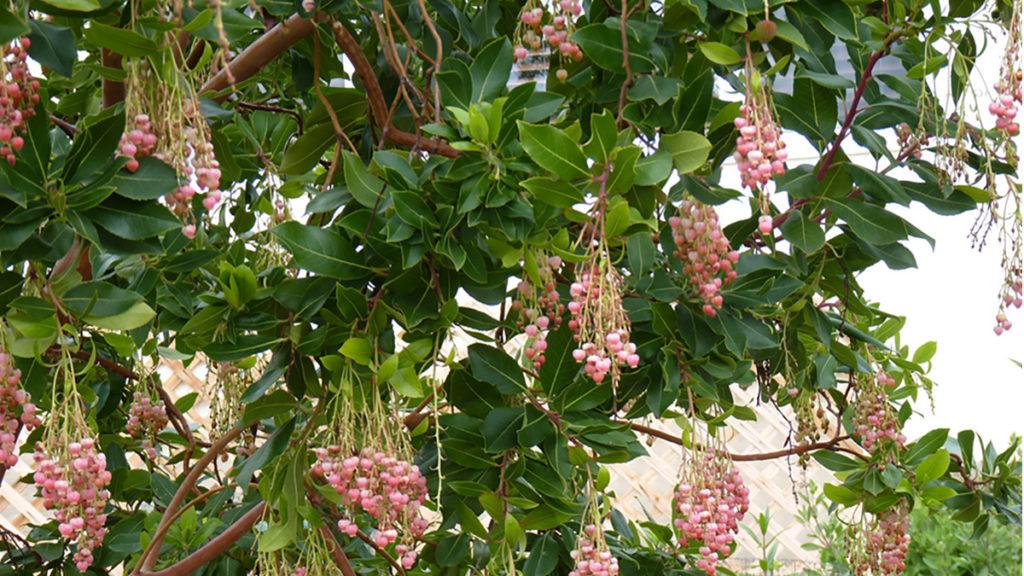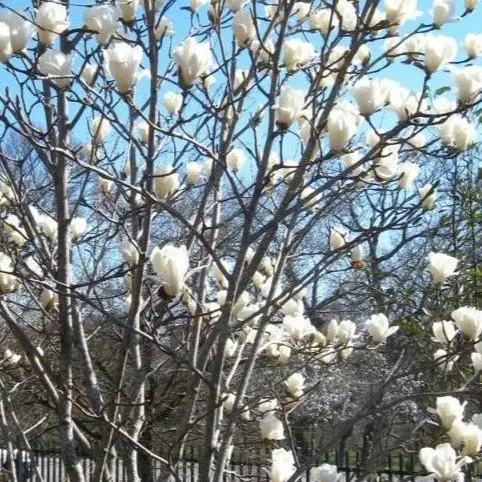Magnolias are not deer resistant. These trees are susceptible to deer damage due to their attractive foliage and tasty flowers.
However, there are some techniques and products available to deter deer from feeding on magnolias, such as repellent sprays or planting alternative deer-resistant plants nearby. Gardeners should be aware of their local deer population and take appropriate measures to protect their magnolias from browsing.
What Makes Magnolias Attractive To Deer?
Magnolias, with their beautiful blooms and elegant foliage, are highly attractive to deer. These majestic creatures are known to have certain scent and taste preferences, which make magnolias a favored food source for them. Additionally, the nutritional value of magnolia foliage also contributes to their appeal. Let’s take a closer look at what makes magnolias so enticing to deer.
Scent And Taste Preferences Of Deer
Deer have a keen sense of smell, which they use to assess the safety and desirability of their food sources. Magnolias produce fragrant flowers that emit a captivating scent, attracting deer from a distance. The sweet aroma of the flowers acts as a magnet, luring these graceful animals towards the magnolia trees.
Furthermore, deer have particular taste preferences when it comes to their diet. They are known to favor plants with a high sugar content, and magnolia foliage certainly fits the bill. The leaves of magnolias are not only rich in essential nutrients and minerals, but they also contain natural sugars that appeal to deer’s cravings.
Nutritional Value Of Magnolia Foliage
Magnolia foliage offers deer not only a delightful taste but also a substantial nutritional boost. The leaves are a great source of protein, which is essential for deer’s growth and development. Protein aids in building and repairing muscle tissue, supporting healthy antler growth, and ensuring a robust immune system.
In addition to protein, magnolia leaves also provide deer with other important nutrients, including carbohydrates, fiber, vitamins, and minerals. These micronutrients are vital for deer’s overall health and well-being, helping to maintain their energy levels, strengthen their bones, and support various physiological functions.
Overall, the combination of the scent and taste preferences of deer, along with the nutritional value of magnolia foliage, makes magnolias a highly desirable food source for these graceful creatures.

Credit: www.monrovia.com
Factors Affecting Deer Resistance
When it comes to selecting deer-resistant plants for your garden, considering various factors can help you make informed choices. Understanding the impact of factors such as the type of magnolia species or cultivar, the maturity of the tree, and the environmental conditions can guide you in creating a deer-resistant garden that showcases the beauty of magnolias without attracting unwanted wildlife. Let’s explore these factors in more detail:
Magnolia Species And Cultivars
The species and cultivars of magnolia plants you choose can influence their level of deer resistance. While no plant is completely deer-proof, certain varieties have proven to be less attractive to deer. For instance, the Magnolia grandiflora ‘Little Gem’ cultivar is known for its relatively higher deer resistance compared to other magnolia varieties.
To minimize the risk of deer damage, it is recommended to select magnolia species and cultivars that have shown evidence of lower deer browsing tendencies. This can increase the chances of your magnolias thriving in areas with frequent deer activity.
Maturity Of The Tree
The maturity of a magnolia tree can have an impact on its deer resistance capabilities. Young, newly planted magnolias are more vulnerable to deer browsing as their branches and foliage are tender and attractive to hungry deer. On the other hand, mature magnolia trees with tougher, thicker branches and leaves are less appealing to deer.
When establishing a deer-resistant garden with magnolias, consider protecting young and vulnerable trees with forms of physical deterrents such as deer fencing or repellents. As the magnolias mature, their natural defenses become stronger, reducing their susceptibility to deer damage.
Environmental Conditions
The environmental conditions in which magnolia trees grow can also play a role in their deer resistance. Magnolias thrive in various climates and soil types, but certain conditions can make them more or less attractive to deer.
For example, magnolias planted in areas with an abundant deer population and limited food resources are more likely to experience browsing, regardless of their inherent deer resistance. Additionally, factors such as drought, extreme temperatures, and poor soil conditions can weaken magnolias, making them more vulnerable to deer damage.
By ensuring optimal environmental conditions for your magnolias, including proper irrigation, pruning, and soil care, you can enhance their overall health and potentially increase their deer resistance.
Deer-resistant Magnolia Species And Cultivars
If you’re a nature lover and have struggled to keep deer away from your beloved plants, you’re not alone. Deer can wreak havoc on gardens and landscapes, causing frustration and damage. However, there is good news – some magnolia species and cultivars have shown resistance to deer browsing. In this article, we will explore three deer-resistant magnolia varieties: the Saucer magnolia (Magnolia x soulangeana), the Sweetbay magnolia (Magnolia virginiana), and the Cucumber tree magnolia (Magnolia acuminata).
Saucer Magnolia (magnolia X Soulangeana)
The Saucer magnolia, a hybrid cross between the Magnolia denudata and Magnolia liliiflora, is a stunning ornamental tree known for its large, showy flowers. These flowers feature graceful, pale pink or white petals surrounding a central cluster of vibrant stamens. While its blossoms attract attention, one of the most appealing aspects of the Saucer magnolia for gardeners is its resistance to deer.
Deer tend to avoid the Saucer magnolia due to its slightly fragrant blossoms and the tough, leathery texture of its leaves. While no plant can be considered completely deer-proof, this cultivar has demonstrated greater resistance compared to other magnolia varieties. By adding the Saucer magnolia to your landscape, you can enjoy its beauty without worrying about deer damage.
Sweetbay Magnolia (magnolia Virginiana)
The Sweetbay magnolia, a native tree of the southeastern United States, is not only known for its elegant, glossy green leaves, but also for its ability to withstand deer pressure. This versatile magnolia species thrives in moist, well-draining soils, making it an excellent choice for gardens with variable growing conditions.
Deer typically avoid browsing on Sweetbay magnolias due to the natural compounds present in their leaves, which emit a subtle fragrance that repels these animals. This, combined with the presence of a milky sap, adds an extra layer of protection against deer damage. Planting the Sweetbay magnolia in your garden can provide a visually appealing focal point while deterring curious deer.
Cucumber Tree Magnolia (magnolia Acuminata)
The Cucumber tree magnolia, native to eastern North America, is a robust and deer-resistant magnolia species. Despite its name, this tree does not produce actual cucumbers but is referred to as such due to the shape and size of its cylindrical fruits. The Cucumber tree magnolia offers beautiful yellow flowers that bloom in late spring, adding a burst of color to your landscape.
Just like the Saucer and Sweetbay magnolias, the leaves of the Cucumber tree magnolia contain compounds that make them unappetizing to deer. This inherent resistance makes it an excellent choice for those seeking a low-maintenance and visually striking tree that can withstand deer browsing.
Tips For Protecting Magnolias From Deer Damage
Magnolias are beautiful flowering trees that add elegance and charm to any landscape. However, they are also a favorite target for deer, which can cause significant damage to the foliage and young branches. To ensure that your magnolias remain healthy and unaffected by deer browsing, it is important to employ effective strategies for protection. Here are some tips to help you safeguard your magnolia trees from deer damage:
Using Physical Barriers
One of the most effective ways to protect your magnolias from deer is by using physical barriers. These barriers create a physical obstacle that makes it difficult for deer to access the trees. Here are a few options:
- Wire Fencing: Surround the base of your magnolias with wire fencing to prevent deer from reaching the foliage. Ensure that the fence is at least 8 feet tall, as deer are known to jump high obstacles.
- Tree Guards: Install tree guards around the trunks of your magnolias to shield them from deer antler rubbing. These guards are usually made of metal or heavy-duty plastic and provide a sturdy barrier against deer damage.
- Netting: Covering your magnolias with netting can be an effective way to deter deer. Make sure the netting is securely fastened around the tree to prevent deer from getting entangled.
Applying Deer Repellents
In addition to physical barriers, deer repellents can be an excellent deterrent against deer damage. These repellents emit odors or tastes that deer find unpleasant, deterring them from approaching your magnolias. Here are a few popular deer repellents:
- Scent-Based Repellents: Scent-based repellents, such as those containing putrescent egg solids or predator urine, mimic the odor of potential predators, causing deer to avoid the area.
- Taste-Based Repellents: Taste-based repellents, like those containing bittering agents or hot pepper extracts, create an unpleasant taste for deer, discouraging them from nibbling on your magnolias.
- Homemade Remedies: You can also create your own deer repellent by mixing ingredients like garlic, soap, and water. Spray this mixture onto the foliage and branches of your magnolias for added protection.
Creating Distractions To Divert Deer Attention
Another effective strategy for protecting your magnolias is to create distractions that divert deer attention away from the trees. By offering alternative food sources or visual stimuli, you can reduce the likelihood of deer damaging your magnolias. Here are some distraction methods you can try:
- Plant Deer-Resistant Plants: Surround your magnolias with plants that deer find unpalatable. Examples include lavender, marigold, and rosemary. This can lure deer away from your magnolias and towards more appealing options.
- Installation of Reflective Objects: Deer can be deterred by shiny or reflective objects that create unexpected movement or glare. Hang CDs, aluminum foil strips, or wind chimes near your magnolias to create visual distractions that deter deer.
- Sound-Based Deterrents: Use sound-emitting devices like motion-activated sprinklers or ultrasonic devices near your magnolias. These devices startle deer with sudden noise or bursts of water, driving them away.
By combining physical barriers, deer repellents, and distraction methods, you can effectively protect your magnolias from deer damage. Remember to regularly inspect your protective measures and reapply repellents as needed to ensure the long-term health and beauty of your magnolia trees.
Frequently Asked Questions On Are Magnolias Deer Resistant?
Are Magnolia Trees Deer Resistant?
Yes, magnolia trees are not deer resistant. They are often a target for deer feeding due to their tender leaves and attractive flowers.
What Plants Do Deer Hate The Most?
Deer despise plants like lavender, rosemary, daffodils, yarrow, and ferns due to their strong scent, bitter taste, or prickly texture. These plants can deter deer from snacking on your garden and are worth considering for deer-proofing.
What Is The Most Deer Resistant Evergreen?
The most deer resistant evergreen is the Boxwood. It’s hardy, low-maintenance, and its dense foliage makes it unappealing to deer.
Are Hydrangeas Deer Resistant?
Yes, hydrangeas are deer resistant as they are not a preferred choice of food for deer.
Are Magnolias Deer Resistant?
Yes, magnolias are deer resistant because they have a bitter taste and strong fragrance that repels deer.
Do Deer Eat Magnolia Flowers?
Deer may eat magnolia flowers if they are desperate for food, but in general, they are not a preferred choice for deer.
What Makes Magnolias Unappealing To Deer?
Magnolias have a natural defense mechanism with their bitter taste, strong fragrance, and tough leaves, making them unappealing to deer.
Conclusion
To conclude, magnolias are indeed deer resistant. Their large, leathery leaves and strong, sturdy branches make them unappetizing to deer. With their beautiful, fragrant blooms, magnolias are a popular choice for gardeners looking to add elegance and grace to their landscape.
So, if you’re tired of deer nibbling on your plants, consider planting magnolias for a deer-resistant solution that doesn’t compromise on beauty.

